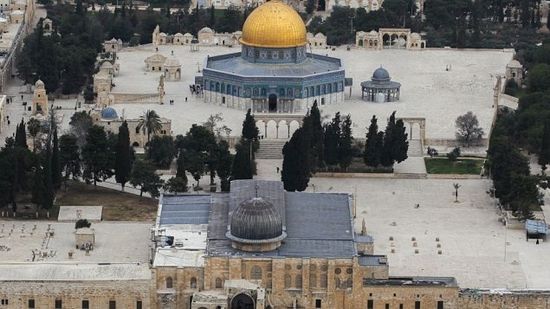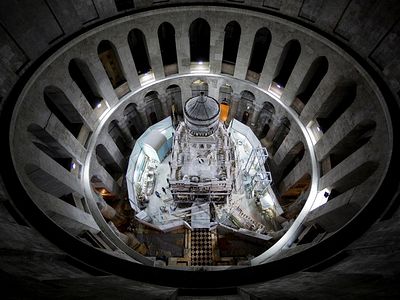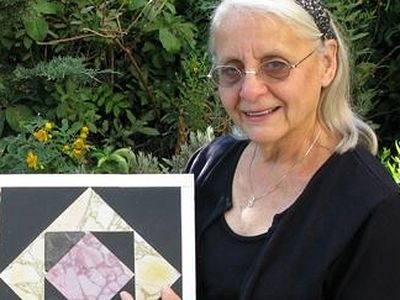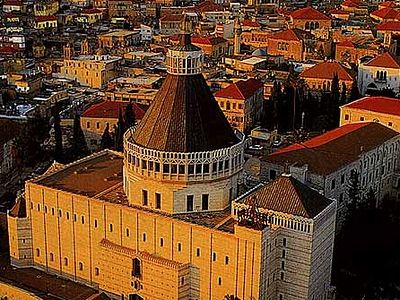Source: The Times of Israel
October 28, 2016
Israeli archaeologists on Thursday presented new details of what they said were the first tiny artifacts, unearthed in situ on the Temple Mount, ever conclusively dated to the time of the First Temple over 2,600 years ago. The discoveries were made during limited scientific excavations carried out atop the flashpoint Temple Mount in the past decade, the first of their kind since the British Mandate.
The highly sensitive Israeli excavations were conducted with minimum publicity in cooperation with the Islamic Waqf which manages the incendiary holy site. The artifacts excavated from the mount, detailed in a paper and presentations at a conference at Hebrew University, are said to include olive pits, animal bones and pottery fragments dating to the time of the First Temple, between the 8th and 6th Centuries BCE.
Archaeologists have previously found a limited number of artifacts from First-Temple-period Jerusalem, but none of those finds were uncovered atop the mount itself. Rather, they were recovered from the Ophel excavations to the south of the Mount, and from the Temple Mount Sifting Project, which examines rubble credibly believed to have been removed from the holy site and dumped in the nearby Kidron Valley.
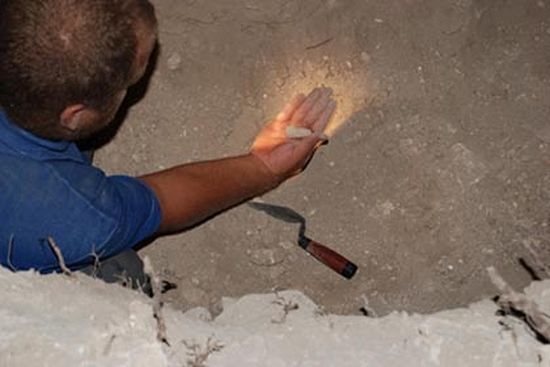 Conical clay object from Temple Mount dating from the First Temple period (Courtesy: IAA)
Conical clay object from Temple Mount dating from the First Temple period (Courtesy: IAA)
“It’s the first time that we’ve found artifacts from this period in situ on the Temple Mount,” Yuval Baruch, the head of the Israel Antiquities Authority Jerusalem region, said Thursday of the discoveries. “As far as the biblical period is concerned, the Temple Mount is a tabula rasa, nobody knows anything,” said Baruch, who headed the archaeological work. It’s still “very limited,” but the tiny fragments of clay and bone are at least something: “It exists.”
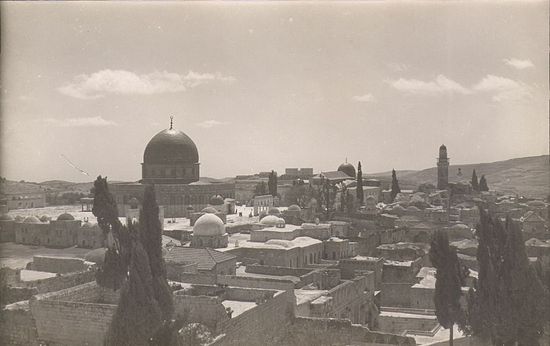 Old City Jerusalem, Temple Mount from Franciscan Monastery (undated) (photo credit: © DEIAHL, Jerusalem)
Old City Jerusalem, Temple Mount from Franciscan Monastery (undated) (photo credit: © DEIAHL, Jerusalem)
The digs at the Mount were carried out between 2007 and the past year after the Waqf requested authorization from Israel to perform maintenance work on infrastructure servicing the Al-Aqsa Mosque and Dome of the Rock, the main structures situated atop the Temple Mount. Previous Waqf projects carried out on the Temple Mount, such as construction of the Marwani Mosque in the late 1990s, did not involve cooperation with archaeologists and resulted in the destruction of antiquities and severe tensions between Israel and the Islamic authorities.
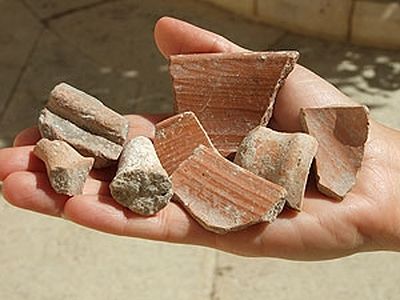 Finds including pottery fragments from the Temple Mount, dated to the First Temple period (Courtesy: IAA)
Finds including pottery fragments from the Temple Mount, dated to the First Temple period (Courtesy: IAA)
The IAA had made limited announcements in the past about its activity on the Mount, releasing brief details of First Temple finds, but Thursday’s conference marked the most detailed presentation of the near-decade of work, the finds, and their significance.
Excavation of a trench for electric cables in 2007 allowed archaeologists the first opportunity to delve below the surface of the contested holy site since Israel captured it in the 1967 Six Day War. All work was conducted with police escort due to the sensitivity of the site.
Although the Waqf received permission from the Israel Police and Electric Corporation to lay the power cable, some archaeologists at the time criticized the operation, saying it wasn’t conducted with “professional and careful archaeological supervision involving meticulous documentation.”
Presenting the finds on Thursday after their examination also marked an opportunity for the IAA to rebuff critics who claim the Temple Mount is a scene of archaeological bedlam.
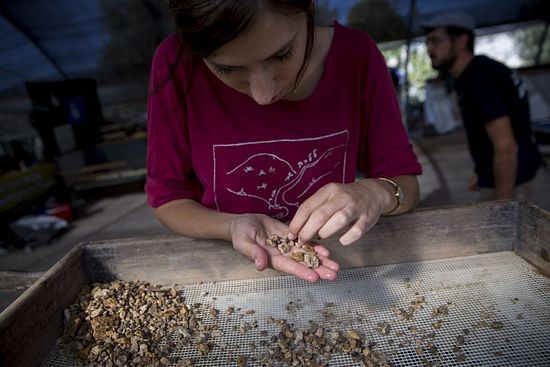 Workers at the Temple Mount Sifting Project, located on the Mt of Olives, October 6, 2016. (Miriam Alster/FLASH90)
Workers at the Temple Mount Sifting Project, located on the Mt of Olives, October 6, 2016. (Miriam Alster/FLASH90)
While the Temple Mount Sifting Project has rummaged through fill from the holy site excavated during the construction of the Marwani Mosque in the 1990s, these newly described digs were the first archaeological study atop the Temple Mount since the 1930s.
The finds on the Temple Mount itself range from a previously undocumented monumental structure believed to be from the 11th and 12th centuries — the period preceding and including the Crusades — to artifacts from Roman times and, unprecedentedly in situ, finds from as far back as the First Temple period.
“It’s not an excavation that you go to a place and dig,” Baruch said of the work on the Mount. “It’s more inspection, and in that framework finds are discovered.”
Among the most significant of those finds, dug up during the laying of the power cable approximately 400 feet southeast of the Dome of the Rock, was a jumble of remains dating to the First Temple period.
“This layer included pottery fragments characterized in the 8th and 7th centuries BCE, as well as animal bones and charred olive pits,” Baruch, Ronny Reich and Deborah Sandhaus, authors of the accompanying paper on the discoveries, wrote. “Carbon 14 dating of the olives yielded dates from the 6th to 8th centuries BCE. This date is confirmed by the dates of the pottery.”
Another segment of the same trench turned up a Roman coin dating to 383 CE, and iron arrowheads, which the authors said could be “rare evidence of activity in the Roman period in the courtyard between the raised part of the Temple Mount and the Al-Aqsa Mosque.”
Additional findings from the work carried out on the Temple Mount by the IAA have yet to be published, Baruch said, including conservation work conducted in Solomon’s Stables, a subterranean vault beneath the Temple Mount’s platform, in the past year.
The publication “points to the fact that, despite all the statements and such, we’re on the Temple Mount and working, overseeing, and business is done under the authority of the IAA,” Baruch told The Times of Israel on the sidelines of the conference.
